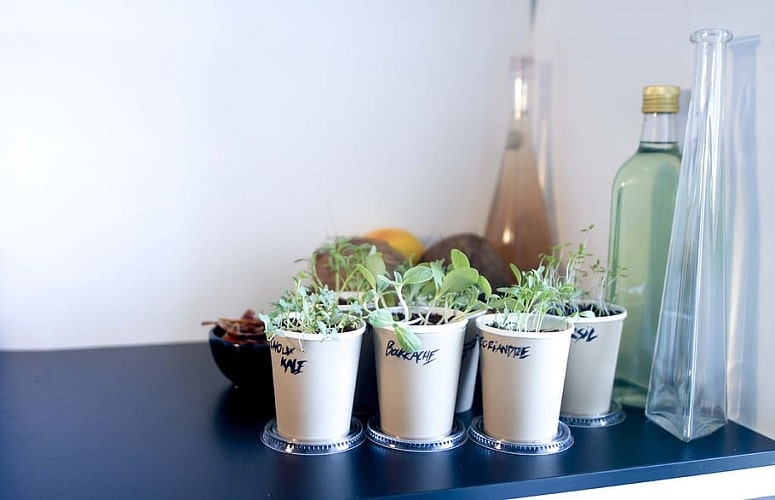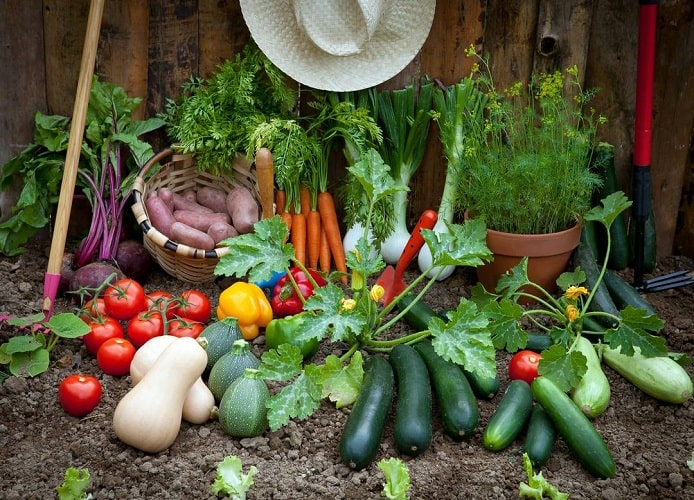Growing Vegetables Indoors: Make Your Grocery Store

In most countries, growing vegetables all year round can be a very challenging task. Winter comes and with you-you have to stay inside and sacrifice the fresh vegetables you grow in your garden for the ones from a store that have traveled thousands of miles and grown in most likely sub-optimal conditions. Luckily, by growing vegetables indoors you can get around this and have fresh food all year long.
Benefits of Planting Indoors
More Control Over Water, Heat, and Light:
For growing healthy and productive vegetables, these three factors are highly important. Heaters can be added in order to deal with cold temperatures. Similarly, on cloudy days, you can use grow lights to give the plants some artificial light for growing. In an outdoor garden, it is impossible to control the watering because rain cannot be controlled. You can add water but not remove it if it rains. In an indoor garden, this problem is eliminated.
Shelters:
Planting can be done according to the needs of the vegetables you are growing. Some vegetables need an ample amount of heat to grow. However, you might be growing them in areas of high elevation where it is cooler even in summer. You can opt to grow them in tunnels which will provide them with the right warmth and also be protected from too much snow or rain in the offseason.
Gardening Steps – Extending the Growing Season:
In the offseason, it might snow or the climate might be wet, cool, or cold. In these circumstances, your outdoor garden will be of no use. By growing vegetables indoors, these hassles can be avoided and you can grow different vegetables depending on your desire or the season.
Pest and Disease-Free Plants:
Certain pests and diseases can be avoided with indoor vegetable gardening. Because the vegetables are being grown indoors, they will not be bothered by any of the insects and pests.
Healthy Transplants:
For growing transplants, you need indoor space, especially in late winter or early spring. For a healthy start, the seedlings of the transplants need warmth and proper shelter.
You can reap all these benefits if you choose to do indoor gardening. There are different structures that you can use for your gardening which include:
- Walk-in tunnels
- Glass greenhouses
- Cold frames
Some tips are also listed below to help you in taking care of your vegetables indoors.
Watering:
Whether you are growing indoors or outdoors, the water demands remain the same. You might kill your vegetables if you overwater them. The soil should be checked to judge the moisture. In addition, the needs of every vegetable are different so you can also do some reading for learning the water needs of different vegetables.
Lighting:
This is a very important aspect of plant growth. Extra lighting has to be provided indoors with the help of grow lights for indoor plants such as sodium conversion bulbs or led grow lights.
Pollination:
In an outdoor garden, the vegetables are pollinated by insects but in indoor gardening, it’s your responsibility. It can be done with the help of a brush, hand, or electric fan.
Fertilization:
This is also a vital issue for planta, particularly in container gardening. Water-soluble fertilizer is the best choice for home vegetable garden soil preparation and it should be added on a regular basis, depending on the needs of the vegetables.
Insects:
There are some different kinds of insects or pests that plague the house. Care should be taken to ensure that no harm should come to your vegetables.
By keeping these factors in mind, you can effectively ensure the health and growth of your plants. There is a multitude of vegetables that you can easily grow indoors and thus have fresh ingredients for your food. Here are some easy-to-grow vegetables that you can choose:
- Cress: It is the easiest to grow vegetables and is grown in flat containers. Even children can grow this particular vegetable easily.
- Radishes: These vegetables need very little maintenance so they can also be grown easily.
- Lettuce: It is also grown in containers and different varieties can be grown.
- Potatoes: They might not be as easy as other vegetables but can also be planted in containers so they are a viable option.
Other options of vegetables include cucumbers, eggplants, peppers, corn, and tomatoes. Growing vegetables indoors will be very beneficial for you as you will be able to garnish your meals with your own produce.
Read More: How to Start Your First Indoor Garden?
Start a Kitchen Garden
January always seems to offer a fresh start and although it is midway through the growing season why not start a kitchen garden that combines herbs growing and vegetables?
Growing your own herbs and veggies is a healthy option because you can produce your own organically grown produce. Edible plants that are picked and used immediately are also much richer in vitamins and minerals. And finally, it is about the satisfaction that comes from harvesting the fruits of one’s own labor.
Such a garden doesn’t need to take up much space, even for a family of four. You just need a fairly level area that receives morning sun or five to six hours of sun during the day.
Herb Selection
The nine herbs that I recommend are primarily for their culinary use but most have a crossover medical use as well. They are Sweet Basil (2 plants), Dill (2), Chives (3), Coriander (3), Mint (1), Oregano (2 plants), Flat-leaf (Italian) Parsley (4), Rosemary (1), and Thyme (1). The numbers in brackets are the number of plants I recommend for a family of four.
Except for basil, dill, and coriander, the others are hardy perennials, of roughly the same height. I plan to use them as permanent borders for beds that will be filled with vegetables or the annual herbs. The only exception is the mint which I will plant in a pot. Rosemary can grow into a large bush so I will make a special space for that.
Combining Herbs and Veggies

There are problems to be solved when combining herbs and vegetables. One is their differing water requirements. Vegetables generally need more water so the drainage needs to be good for the herbs to flourish. Well-composted soil should do the trick because it drains well, yet retains enough water.
The other problem is pests and diseases. Vegetables tend to be more susceptible to both and it is best to only use organic insecticides like Ludwig’s Insect Spray or Margaret Roberts Organic Insect spray. For snails used crushed eggshells or Macadamia nutshells.
Veggie selection
The vegetables recommended by Kirchhoff’s seeds for sowing in January are cabbage (Copenhagen Market) or Intro (baby red cabbage), spinach (Fordhook Giant or Bright Lights) leeks (Carentan), onions (Texas Grano), tomatoes (Floradade), or the cherry tomato (Red Cherry Sweetie) if you are in a frost-free area or receive late frost, beetroot (Crimson Globe), carrots (Cape Market or Chantenay Karoo) and beans (Wintergreen).
If you are establishing the garden from scratch all the vegetables can be directly sown into the bed, which has been well dug over and composted. If you already have vegetables growing and don’t have space, sow the seed in seed trays and when the plants are big enough to handle replace existing crops that might be over, like spring-sowed tomatoes.
Looking ahead, keep space in mind for planting peas and lettuce at the end of March, or early April.
If you don’t want to sow from seed there is still enough growing time left to plant seedlings of sweet green peppers and tomatoes that are on the plant racks at your local garden center.
According to my family’s tastes, I am planting 8 cabbages, 4 tomatoes, 12 spinach plants, a small bed of carrots, 2 rows of beetroot, and 6 bean plants.
Tasks
For those with existing herb gardens, the January tasks are to tidy up after festive season neglect by pruning herbs back into shape, renewing the mulch if necessary and renewing beds by digging in compost.









